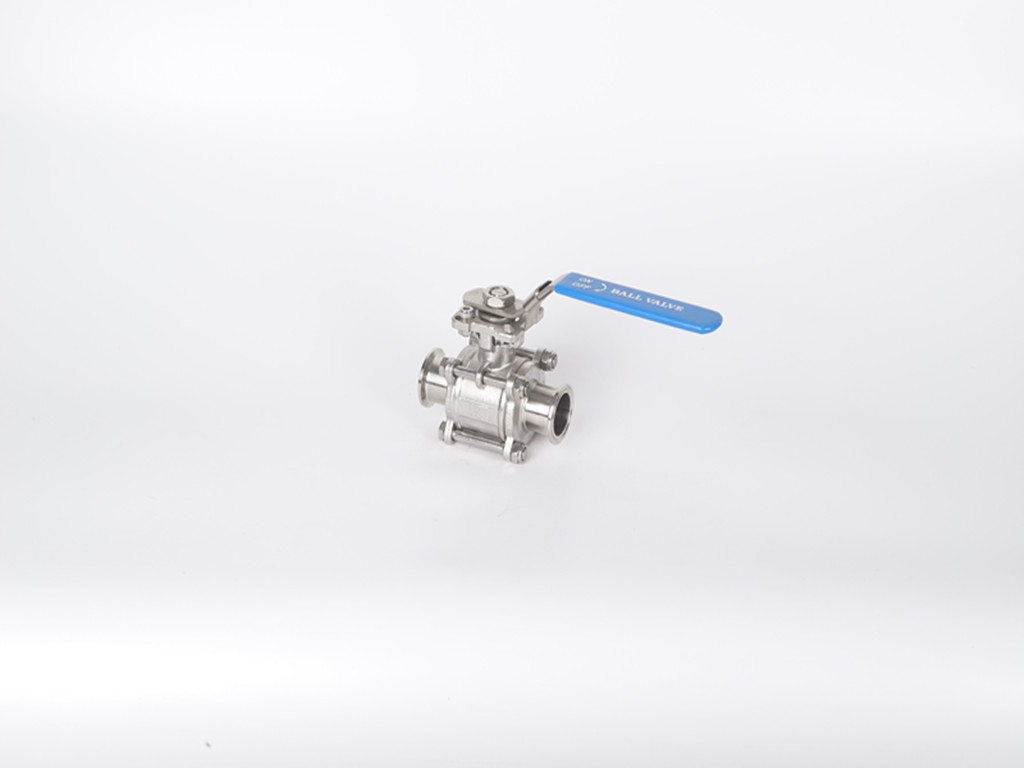Connection methods: Flange connection, wafer connection, internal thread connection, external thread connection, quick-install connection, and welding connection (butt-welding connection, socket-welding connection).
Valve seat sealing: Metal hard-sealed ball valves, where the sealing surfaces of the valve seat and the ball are metal-to-metal, are suitable for high-temperature applications, those containing solid particles, and scenarios requiring wear resistance. Soft-sealed ball valves, with valve seats made of polytetrafluoroethylene (PTFE) or polyphenylene sulfide (PPL) elastic sealing materials, offer excellent sealing performance and can achieve zero leakage.
Working pressure: Low-pressure ball valves, with a nominal pressure PN ≤ 1.6 MPa.
Flow passage types: Straight-through ball valves, three-way ball valves (L-shaped flow passage, T-shaped flow passage), and four-way ball valves.
The double-acting piston pneumatic actuator mainly consists of components such as a cylinder, end caps, a piston, a gear shaft, limit blocks, adjustment screws, and indicators. It uses compressed air as the power source to drive piston movement. The piston integrates a rack that drives the gear shaft to rotate by 90°, thereby actuating the opening and closing of the ball valve.
The single-acting piston pneumatic actuator primarily incorporates a return spring between the piston and the end cap. This allows the ball valve to reset to its open or closed position via the spring’s pushing force in the event of a gas supply pressure failure, ensuring the safety of the process system. Therefore, when selecting a single-acting cylinder, it is important to determine whether the ball valve should be in a normally open or normally closed state.
Solenoid valves: Double-acting cylinders are generally equipped with two-position five-way solenoid valves or three-position five-way solenoid valves. Single-acting cylinders can be paired with two-position three-way solenoid valves. Voltage options include DC24V and AC220V, among others. Explosion-proof requirements should also be considered.
Limit switches: These are used to convert the rotation of the actuator into contact signals, which are then output to control instruments to provide feedback on the on/off status of the ball valve in the field. Common types include mechanical and magnetic induction types. Explosion-proof requirements should also be taken into account.
Handwheel mechanism: Installed between the ball valve and the cylinder, it allows for manual switching in the event of a gas supply failure, ensuring system safety and uninterrupted production.
Air source treatment components: These include two-piece and three-piece units that function to filter, reduce pressure, and provide oil mist. It is recommended to install them to prevent impurities from entering the cylinder and causing it to jam.
Valve positioner: This is required for proportional control pneumatic ball valves and is mostly used with pneumatic V-shaped ball valves. It accepts a 4-20 mA input signal and should be considered for whether it includes feedback output signals and if explosion-proof requirements are necessary. Options include standard and intelligent types.
Quick exhaust valve: This accelerates the opening and closing speed of the pneumatic ball valve. It is installed between the cylinder and the solenoid valve, allowing the gas in the cylinder to be rapidly exhausted without passing through the solenoid valve.
INFO: Mobile/Whatsapp:+86-18875809195


